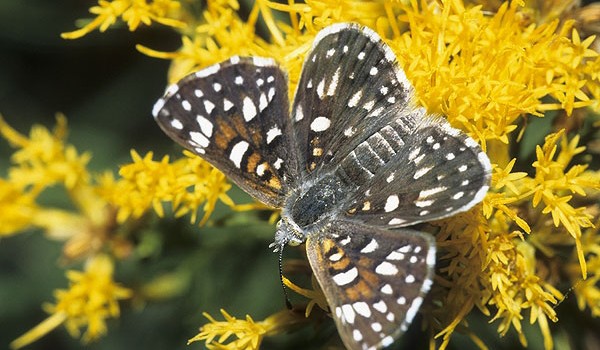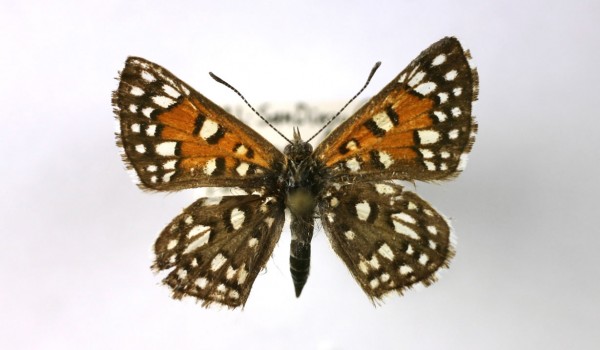Butterflies and Moths (Lepidoptera)
Metalmarks
RiodinidaeMormon Metalmark is the only Canadian species in this family, occurring in only two populations. It is endangered because all life stages are strongly associated with their host plants. Both Buckwheat (Eriogonum spp.) plants, and the Mormon Metalmark, are at risk of habitat loss due to land development, out-competition by weedy plant species, and agricultural practices such as pesticide use and overgrazing.
Representative Genera and Species:
Apodemia mormo
Pollinator Life Cycle:
A single annual generation is produced. Females lay solitary eggs or clusters of 2-4 on host plants. Larvae hibernate in the stems, flowers, or under leaf litter, and emerge in the spring. They eat only at night, feeding on host plant leaves and stems. Adults fly in August to September when host plants are flowering, and live for around 10 days on average.
Rarity Status:
The Mormon Metalmark is protected under Canada’s Species at Risk Act and Saskatchewan’s provincial Wildlife Act. It is considered “critically imperilled” in BC.
Physical Appearance:
These butterflies have green eyes, black-and-white banded antennae, and a wingspan of 25–32 mm. Their wings are orange and brown with white and black markings on the upper sides, and grey with white spots underneath. Males tend to be smaller, and have reduced forelegs that are not used for walking. Females are larger with three sets of fully developed walking legs. Larvae are dark purple with short black spines.
Pollinator Habitat:
Mormon Metalmarks usually live among their host plants, in dry areas on hillsides or embankments with sandy or gravely soils.
Canadian Distribution:
- British Columbia
- Saskatchewan
Prairie Types:
- Mixed Grass Prairie







